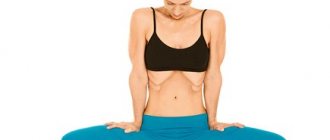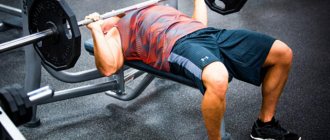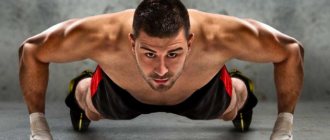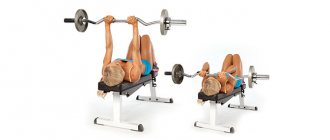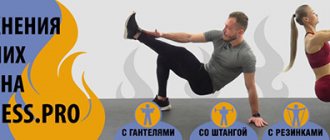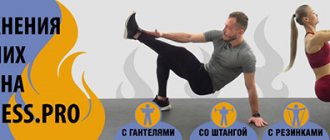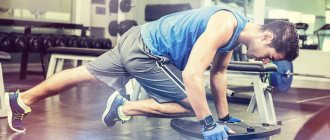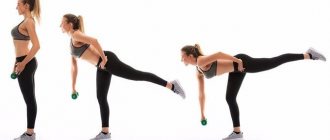Diaphragmatic breathing
Before we begin to understand how to breathe with the diaphragm correctly, let's find out how this process works. It turns out that when we breathe this way, we use the abdominal muscles that separate the abdominal cavity and the chest cavity. When we inhale, the diaphragm moves down, begins to put pressure on the internal organs located in the lower abdomen, and a large amount of air is drawn into the lungs, which occurs due to the pressure difference. When we exhale, the diaphragm rises, returns to its original position, and the processed air is pushed out. At first glance, the breathing process is similar to the way we always breathe, that is, chest breathing, but only this time the amount of inhaled and exhaled air is several times greater, and the diaphragm acts as a second heart. And all because during inhalation and exhalation, this organ disperses blood throughout our body with much greater force than our heart does.
Types of breathing
To begin with, briefly about what physiologically, two types of breathing can be distinguished:
1. Chest breathing, which in turn is divided into two types. Clavicular chest breathing occurs with the help of the collarbones. Inhaling, they rise. As they exhale, they let go. This type of breathing is used mainly by older people. The second type is rib. The chest contracts and expands depending on the way you exit and inhale. This type is the most popular, but that doesn't make it the most useful.
2. Breathing with the diaphragm (belly). On inhalation, it is compressed and lowered as much as possible, while on exhalation, the diaphragm tends to rise, thereby trying to push air out of the lungs. The belly is inflated as you exhale. It is thanks to breathing through the diaphragm that the maximum volume of the lungs is used. This type of breathing is considered the most natural and beneficial. Most athletes use it, because for loads you need to use the entire volume of your lungs.
The benefits of diaphragmatic breathing
Before we start learning how to learn to breathe with the diaphragm, let's figure out why this is necessary at all. So, according to reviews from doctors, people who constantly resort to diaphragmatic breathing experience:
- improving the condition of blood vessels;
- improving the condition of the abdominal organs and lungs through pulmonary massage;
- cleansing the smoker's lungs;
- relief from shortness of breath;
- getting rid of problems with the functioning of the gastrointestinal tract;
- elimination of bloating, excessive peristalsis and constipation;
- improved functioning of the kidneys, gall bladder and pancreas;
- gradual loss of excess weight;
- increase in lung volume by approximately 25%;
- eliminating problems with potency and the causes of prostate adenoma;
- decreased blood pressure;
- normalization of the nervous system.
Benefits of abdominal breathing
The effectiveness of the diaphragmatic breathing method for the functioning of the entire body has been proven, primarily through the elimination of psychosomatic blocks.
With the chronic action of stress factors in the modern world, a person develops a so-called muscle corset, a source of psychosomatic problems, due to constant muscle tension, including the abdomen and pelvis. By relaxing the abdomen, blocks that are harmful to mental health are eliminated.
Abdominal breathing poses virtually no harm to the body, but its benefits can hardly be overestimated, since it:
- promotes fat burning: this demonstrates its beneficial properties for weight loss;
- due to blood saturation with oxygen, it improves the functioning of the cardiovascular system;
- enhances ventilation of the lungs, since it uses almost their entire volume;
- benefits the speech apparatus, freeing up its work;
- improves the functioning of internal organs - due to their massage with the diaphragm;
- has a beneficial effect on the intestines, helping to get rid of constipation, bloating and other problems;
- has particular benefits for women: with the help of high-quality belly breathing, you can improve the condition of your facial skin, reduce the number of wrinkles and various inflammatory processes.
Learn more about the features and benefits of abdominal breathing in the video:
Getting rid of chest breathing
In fact, a person always breathes through the diaphragm, because this organ takes a very direct part in the breathing process. However, when we inhale and exhale, the pectoral muscles also take part in this process, and those people who use them the most should wean themselves from chest breathing before figuring out how to breathe correctly from the diaphragm or belly. To do this, it is recommended to perform three specific exercises that need to be done until you can repeat them correctly, without the slightest strain.
- You should lie on your back, place your left hand on your upper abdomen and your right hand on your chest, and then take a calm breath so that the upper abdomen inflates and the chest remains motionless.
- You should lie on your side and start breathing with your stomach, which will happen almost spontaneously, because in this position it is problematic to breathe with your chest.
- You should sit down, relax your neck and shoulders, and then inhale and exhale deeply, trying to relax your pectoral muscles and allow your belly to breathe.
LiveInternetLiveInternet
Why do you need to breathe properly?
You exhaust yourself with fitness, and still don't lose weight. Why? One explanation is improper breathing.
Reason 1: Oxygen supply
Our fat stores represent energy in a “passive” form. Without exaggeration, they can be compared to a pile of coal or a woodpile. In order for fat to “flare up”, it must be fanned like a fire. In other words, ensure the flow of oxygen. It is for this reason that when you run, you begin to breathe more often. The faster you breathe, the more oxygen in the blood. The more it gets into areas of fat accumulation. Then everything is simple: fat burns and releases energy to working muscles. Now let's make two important conclusions.
The first conclusion: the intensity of the training should be high. The more energy your muscles need, the more fat your body will have to burn.
The second conclusion , the most important: you need to breathe during sports not anyhow, but correctly.
Reason 2: Correct load
To an inexperienced beginner, it seems that his intermittent, ragged breathing is a sign that he has taken a really serious load on his chest. Accordingly, more fat will be burned, they say. No, it's not like that at all. When you gasp for air with your mouth wide open, like a fish thrown ashore, it just means that your body is sorely lacking oxygen. This has nothing to do with losing kilograms, since a lack of air automatically leads to a “fading” of the metabolic flame, that is, a slowdown in fat burning. Remember the burning of a candle. In the open air it burns calmly and evenly. But as soon as you cover it with a glass, in other words, “cut off its oxygen,” it immediately goes out. So, the harder it is for you to breathe, the less hope you have for losing weight.
Reason 3: Heart rate
Breathing is an unconscious process.
Watch yourself
when you watch TV. You inhale and your chest heaves. This is the so-called chest breathing, in which the body expends a minimum of its strength. When you breathe through your chest, your inhalation is inevitably shallow because air circulates only in the upper part of your lungs. During fitness classes, out of long-term habit, you continue to breathe from your chest. As a result, the lungs work at barely a third of their potential volume. Such breathing almost immediately creates an energy deficit, since the body desperately lacks oxygen. In response, the body tries to make breathing more frequent - it speeds up the heart rate. As a result, the pulse quickens, creating stress for the body. It is because of this that the next day after aerobics, instead of pleasant fatigue, you feel completely exhausted.
Reason 4: Correcting your posture
Remember: oxygen exchange occurs most efficiently in the lower part of the lungs. In order for air to penetrate here, you need to breathe deeply - diaphragmatic (or “abdominal”) breathing. Simply put, you need to breathe with your stomach. Now let’s start experimenting: inhale - the stomach inflates, exhale - the stomach retracts, pushing out the remnants of recycled air. If you find it difficult to breathe from your stomach, it means you have extremely bad posture. Stand with your back to the wall and try to press the back of your head, buttocks and calves against the wall at the same time. Again try to breathe into your belly. Happened? In any case, first you need to correct your posture (see 10 rules for royal posture
) and only then take on a serious aerobic cycle aimed at dramatic weight loss. Otherwise, you will be out of breath and will not be able to handle even half of the required load.
Reason 5: Fight fatigue
How to breathe - through the nose or mouth? Definitely the nose! Breathing through the mouth limits the vital capacity of the lungs and burns up gas exchange in the body, even in the case of correct “abdominal” breathing. But “nasal” breathing, on the contrary, activates the diaphragm as much as possible. In addition, breathing through the nose calms the brain's biorhythms, like meditation. As a result, fatigue sets in later. You should breathe through your nose as much as possible, and the transition to mouth breathing occurs automatically as the load increases. Breathing through your nose seems more difficult than through your mouth, but this is only at first. To teach yourself a strict breathing rhythm, count your steps (or strokes, or pedal rotations - it doesn’t matter) and adjust your inhalations and exhalations to them. Gradually increase your breathing interval. If you used to breathe every second step, now try breathing in every fourth. Continue to breathe in a new way not only in the gym, but also in everyday life. And take your time: it may take you from 3 to 10 weeks of practice to master this science.
Breathing during training - practical recommendations
If you learn to control your breathing, you can significantly lighten the load on the cardiovascular and respiratory systems and increase the effectiveness of the training process. Exercises to develop flexibility - bends, turns, rotation of the torso, swings, circular movements of the arms and legs - in all these exercises, inhale in positions that promote expansion of the chest, and exhale when it contracts. . For example, tilting - exhale, straightening the body - inhale. Do you feel your lungs “expanding”?
Strength exercises In these exercises, everything depends on muscle tension - it is recommended to exhale at the moment of greatest muscle effort, and inhale at the moment of the least. That is, if you raise your legs up from a position lying on your back, then inhale while raising your legs, and exhale while lowering them down, when the tension in the abdominal muscles is greater. During inhalation, intra-abdominal pressure increases and, accordingly, arterial pressure, which increases the load on the cardiovascular system. There is no need to add to it the load from the movement being performed. In addition, it is easier to concentrate effort while exhaling. When doing push-ups from the floor in a lying position, inhale while bending your arms, and exhale while straightening.
And now about exhalation. The main rule in this case is not to hold your breath!
Under any circumstances, it is impossible to delay it, to do it at the very end of the effort. This can lead to a sharp rise in pressure and overload the heart.
In cyclic exercises during walking, running, swimming, etc. It is especially important to breathe correctly, because the body’s need for oxygen increases several times. When performing cyclic movements, try to breathe evenly and deeply, focusing on exhalation. The more fully you exhale, the deeper the inhalation and the better the ventilation of the lungs. However, a sense of proportion is necessary in everything. Excessively deep breathing can have the opposite effect. And further. Physiologically, our inhalation is slightly shorter than our exhalation. Therefore, instructors advise that during cardio training (running, skiing, cycling, elliptical, walking) to monitor the uniformity of breathing. Inhale in two counts - “one-two” and exhale in the same way - “one-two”. Therefore, to accustom yourself to even breathing, count to yourself one-two, one-two. Just pay attention: the inhalation is not held, but slightly stretched. When running, first of all, you need a rhythm and frequency of breathing that is coordinated with the movements of the body. Erratic breathing, with pauses or, on the contrary, too rapid breathing disrupts the rhythm of running, complicates coordination and does not provide sufficient ventilation of the lungs. For example, when running slowly, each inhalation and exhalation takes 3-4 steps, and when moving at an average speed, each inhalation and exhalation takes 1-2 steps. Do you feel like your throat is dry? Reduce stress and restore breathing. By the way, breathing while running is an indirect indicator of your heart rate. If you are able to breathe through your nose while running, your heart rate is unlikely to exceed 130 beats per minute.
What to do if we are suffocating. This happens when we choose an activity that is too intense. It’s hard to breathe even after illness, flight or lack of sleep. There is no need to overcome yourself in such a situation; if you start to choke, reduce the pace and gradually complete the workout. Do you feel strong enough to continue? Then do the exercises at a slower pace. Remove some repetitions, replace jumps with steps, reduce the range of movements. Of course, it’s a shame to “be philandering,” but it’s better than fainting. Moreover, remember? – when breathing is impaired, the body stops burning fat because it does not receive enough oxygen. It is useful to raise your arms and shoulders up while inhaling, expanding your chest as much as possible, and slowly lower it as you exhale.
Don't forget to breathe! Some people even stop breathing while doing exercises. A person is so focused on the exercise that he literally performs it with bated breath, and this is not good because it leads to increased blood pressure.
For such people, it is very important to relax psychologically and feel as comfortable as possible in class. They should especially carefully choose the type of training (so that they like it) and be sure to do a warm-up.
PS. There are techniques that deviate from the general rule - yoga, Pilates, callanetics. Effectiveness in these practices is highly dependent on strict adherence to a specific breathing cycle. Based on materials from fitnes-doma.blogspot.co.il, turnichok.ru, www.newsland.ru
Rules for performing exercises that teach diaphragmatic breathing
Before we begin the exercises that will allow us to learn how to breathe with the diaphragm, we should remember a few rules for their implementation, which, judging by the reviews, allow us to get the maximum benefit from the training.
- Before starting training, it is better to consult your doctor, since these activities are contraindicated for those who suffer from hypertension, because during exercise there is an increased effect on the lungs and heart, which can provoke an attack.
- Since overweight people find it difficult to immediately relax their muscles during exercise, they should learn to relax before performing exercises.
- The best time to perform the exercise is early morning or late evening.
- It is very important to choose a quiet place for training, where no one will distract you and you can completely focus on yourself.
- At first, you should train once a day for 30 minutes.
- In the future, specific exercises should be performed three to four times a day for 10 minutes.
- You should not be alarmed if after the first sessions you feel pain in the diaphragm area, since after a couple of days of training it will completely disappear.
Learning to breathe from the diaphragm or belly
When you have managed to get rid of chest breathing and have memorized the rules for performing exercises with which you can learn to breathe with your stomach or diaphragm, you can begin a simple training session that will continue for a couple of weeks. Judging by the reviews, during this time everyone will be able to learn proper breathing, so that they can then begin more complex workouts that will bring even more benefits to the body.
- You need to lie on your back on a fitness mat, put a pillow or a towel cushion under your head, bend your knees and try to relax as much as possible.
- You should close your eyes, focus on all your muscles and watch how they relax immediately after you exhale.
- You should place your hands on your chest and stomach to feel how you breathe, which will help you correct your breathing during exercise if you suddenly feel that it is not your stomach that is moving during the exercise, but your chest.
- The air should be inhaled through the nose very slowly, trying to saturate the lungs with oxygen as much as possible and making sure that the stomach is strongly swollen.
- You should exhale air through your mouth, doing it twice as slow as the perfect inhalation, making sure that your stomach is drawn inward as much as possible.
Breathing in sports. Proper breathing during training: how and why?
Experienced athletes know that proper breathing during training plays a big role: the effectiveness of exercise increases, and fatigue at the end is only pleasant. Therefore, time is certainly given to breathing techniques - these rules must be mastered at the very beginning of the training process.
How to breathe correctly?
Breathing techniques differ in every sport, but they are united by a simple rule - don’t forget to breathe! Whether you are running or stretching, doing yoga or squatting with weights, your breathing should be even. Do not hold in the air, because then oxygen will not enter the body, and your strength will quickly leave you.
When performing exercises, it is important to remember that inhalation is done at the moment of muscle relaxation, and exhalation is done at the moment of their tension, when maximum effort is applied. For example, when lifting a barbell, you exhale as you lift it, and inhale when the barbell returns to the ground. When performing abdominal exercises, exhale when raising your legs or body, and inhale when lowering.
Breathing should be deep (diaphragmatic), but comfortable. When you inhale, your stomach should inflate. This may seem inconvenient, but it is with this type of breathing that the body receives maximum oxygen and does not expend energy, as with shallow, frequent breathing.
It also matters how the athlete breathes - through the mouth or nose. It is recommended to inhale through the nose, because the air passing through the nasal passages is warmed, moistened and cleansed of dust and microorganisms. It is better to exhale through the mouth, because this way the air will come out faster.
Why is it important to monitor your breathing?
When you exhale, the maximum amount of energy appears, which is necessary to effectively perform the exercises. In addition, when exhaling air, the abs and diaphragm tense, which gives additional stability and helps to bear the load without harming the body. At the moment of inhalation, the muscles of the body tense unevenly, so a person cannot put all his strength into the exercise and the physical activity is more difficult.
Consequences of improper breathing technique
As we have already said, during training, breathing technique is important: the depth of inhalation and exhalation, frequency, correct alternation of phases. If you do not pay attention to these rules, the following consequences may occur:
1. Headache, dizziness, weakness - these symptoms appear due to oxygen starvation of brain cells - they are very sensitive to hypoxia. Therefore, you need to breathe evenly. It’s hard to do this at first; you need to constantly monitor your breathing.
2. Increased arterial and intra-abdominal pressure - usually occurs due to too deep inhalation and exhalation, or due to rapid alternation of these phases.
3. Low effectiveness of the training – this is to be expected, since the body is forced to deal with hypoxia and additional load throughout the entire training process. The results from exercise will take much longer to achieve, and the load on the body can affect your health in the future.
Have a good training!
Seated workouts
Now that you know what it means to breathe from your diaphragm while you're lying down, you can begin seated workouts that you can do at any time convenient for you, while you're sitting in a chair or on a chair.
To do this, sit on a chair, straighten your back, look straight ahead, and then close your eyes. After this, you need to completely relax and begin the exercise, alternating a slow inhalation and an even slower exhalation. It is best to place your hands on your stomach, so that you can then feel how it rounds when you inhale, and deflates when you exhale. Naturally, the chest should not take any part in the exercise.
Correct belly breathing: what types of breathing exist
In total, it is customary to distinguish three different types of breathing:
- rib;
- clavicular;
- diaphragmatic, also known as belly breathing.
The first two points relate to chest breathing. In the first case, we are talking about breathing, in which the chest expands during inhalation due to the intercostal muscles, filling the lungs with air. This method allows you to breathe deeply, but does not fully utilize lung capacity and is not the most energy efficient.
Clavicular breathing is more common in older people. With it, the lungs work at no more than 20% of their maximum volume. With such a clear lack of ventilation, the body's resistance to bacterial and viral diseases is significantly reduced. It also manifests itself during nervous overstrain and is typical for people suffering from neuroses and anxiety disorders.
Diaphragmatic breathing is natural for humans. It is carried out due to the work of the diaphragm - the muscle that separates the chest and abdominal cavity. When you inhale, it goes down, which is why the stomach inflates. And when you exhale, it rises, squeezing the air out. After reading the article to the end, you will be able to try all these three types of breathing yourself and see for yourself which one is the most effective.
Exercise "Dog"
You can also improve your knowledge of how to breathe with the diaphragm from an exercise called “Dog”, which, judging by the reviews of experts, allows you to learn to feel the work of this organ and control the work of the lungs. The main thing is not to do it for a very long time, because otherwise, judging by the reviews of people working using a similar technique, you may feel severe dizziness.
To perform this exercise, you will need to get on all fours, taking a dog pose, and try to relax your abdominal muscles as much as possible. And then you will just need to breathe very often and quickly, inhaling and exhaling air through your mouth. Judging by the reviews, the optimal time to complete the exercise will be 3-5 minutes.
Exercise with a book
And to fully understand how to breathe with the diaphragm, experts recommend training with a load, the role of which can be played by an ordinary thick-bound book. This activity will help you learn to completely and completely control every intake of air into the body and every removal from there, because in this case, oxygen saturation of the body occurs at the slowest pace, which brings maximum benefit to the person.
To perform this exercise, you should lie on a mat, put a cushion under your head, relax and place a book on your stomach. Then you will need to slowly inhale and exhale, carefully watching the book, which should move in the “up and down” direction.
Reducing the volume of inhaled and exhaled air
After performing specific exercises that allow you to learn diaphragmatic breathing, you can begin training that will reduce the volume of inhaled and exhaled air. The fact is that in training exercises we constantly control ourselves while inhaling and exhaling, trying to do it slowly, so in ordinary life, when we stop monitoring ourselves, many then begin to breathe through their chest again. To prevent this from happening, experts advise training to reduce the volume of inhalation and exhalation.
To do this, you need to take a comfortable position, completely relax, and then you can inhale and exhale air through your nose, but do it not slowly, but quickly. At first, you will feel that only your chest is moving, but after a while the diaphragm will begin to work and then, after a few weeks of training, you will completely switch to diaphragmatic breathing.
How to breathe with your diaphragm for weight loss
Many nutritionists recommend that their clients learn diaphragmatic breathing to lose weight, and judging by the feedback from these people, as soon as they started breathing using the diaphragm or belly, they actually began to lose weight faster. They performed the following exercises to lose weight:
- we inhale, counting to four in our minds at this time, then hold our breath, counting to four, and exhale, again counting to four (repeat 10 times);
- we pull in the stomach, tense its muscles and take a deep breath, then clench our lips tightly and begin to release air through them jerkily, after which we exhale completely and relax the abdominal muscles (repeat 15 times);
- We take a sitting position, straighten our back, while placing our feet firmly on the floor and begin to breathe with our stomachs, alternately tensing and relaxing our abdominal muscles (repeat first 10, and after a while 40 times);
- We lie down on the floor, bend our knees, place our left palm on our chest, our right palm on our stomach, begin to alternately inhale, simultaneously drawing in our stomach and pressing on it, and exhale, inflating our stomach and pressing on our chest (repeat 15 times).
These simple exercises can help you lose weight and learn how to breathe properly at the same time.
